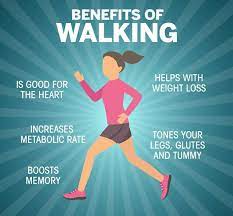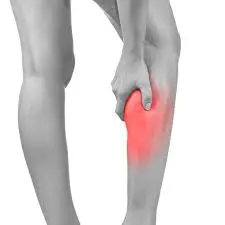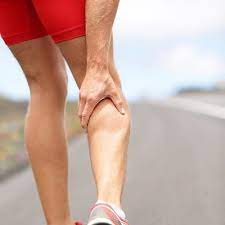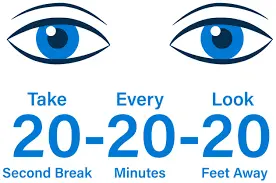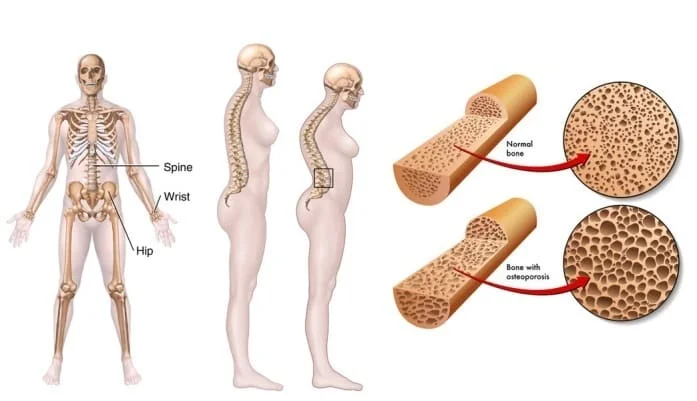18 Amazing Health Benefits of Walking
Regardless of age, one of the easiest ways to stay in good health, maintain a healthy weight, and sustain strong joints is also one of the most effective. Experts believe that adding walking into your daily routine can significantly enhance both your physical and emotional well-being, as the health advantages of walking are numerous.
Walking is my primary form of cardio exercise.” Walking for at least thirty minutes every day is crucial. According to studies, walking can provide a range of health benefits, such as reducing blood pressure, lowering the risk of chronic diseases, improving mental clarity, and enhancing emotional well-being. You can choose to walk to work, walk with a friend, or even join a hiking club while wearing comfortable walking shoes to achieve these goals.
According to the writer, walking has numerous benefits such as supporting a healthy immune system, boosting metabolism, strengthening joints, muscles, and bones, reducing stress levels, and providing some leisure time. It’s simple and suitable for all fitness levels to get their daily quota of steps. The key to achieving these benefits is to aim for at least thirty minutes of walking every day.
Studies show that walking has several health benefits, including lowering blood pressure, lowering your risk of acquiring chronic illnesses, boosting mental clarity, and improving your emotional condition. You can opt to lace up your shoes, join a hiking club, or walk to work.
Examine the various benefits of planning ahead for a walk, as well as what to expect from a stroll lasting 30 minutes most days of the week.
The Health Advantages of Walking
When you walk, your own body weight is carried. We call this type of exercise weight-bearing. Among the advantages are:
- enhanced fitness for the heart and lungs (cardiovascular and pulmonary)
- decreased chance of stroke and heart disease
- enhanced care for diseases like diabetes, high blood pressure, high cholesterol, joint and muscle stiffness, and hypertension
- enhanced balance and stronger bones
- improved endurance and strength of the muscles
- decreased body mass.
Below are some major benefits of walking
1- Lift your spirits
Actually, studies suggest that even ten minutes of walking might improve your mood. Walking during the COVID-19 epidemic has been shown in other recent research to greatly enhance mood. Furthermore, the image might be enhanced even further if you wander through some vegetation.
Walking regularly, especially when you’re taking leisure among some greenery or getting some sunlight, “actually modifies your nervous system so much that you’ll experience a decrease in anger and hostility,” according to research. This can be especially beneficial in the winter months when seasonal depression is more prevalent.
Ultimately, socializing on your walks—taking a stroll with your significant other, a neighbor, or a close friend, for example—makes you feel connected and can even elevate your mood.
2-Reduce body fat and keep a healthy weight
Even if the number on the scale isn’t changing much, you could notice that your jeans start to fit more loosely around your waistline as you walk further. This is because studies have shown that frequent walking can help lower body fat, which in turn improves your body’s reaction to insulin.
Are you itching to burn more calories? Scientist suggests that when you go for a walk outside, make sure your route incorporates hills, switch between walking at a faster and slower pace, and set a goal for yourself to walk the same routes on different days to see if you can beat your old times. scientist also suggests setting a goal of 10,000 steps every day to give you an extra push.
Walking every day boosts metabolism by burning more calories and reducing muscle loss, which is particularly significant as we age.
According to scientists, a walking coach, and the author of Prevention’s Walk Your Way to Better Health, intervals are crucial in this situation. You can burn more calories walking at a faster pace for brief periods of time—say, 30 minutes—than if you walk for 30 minutes at a moderate pace. Your cardiorespiratory system will profit from this strategy as well. After three minutes of warming up, try adding intervals. Next, walk almost as fast as you can for one minute and then walk briskly for one minute for 25 minutes, aiming for a six on the intensity scale of one to ten.
3-Strengthen your heart
Walking lowers blood pressure, which is one of the main reasons it can help your heart. Your systolic blood pressure may drop by 45 points for every 1,000 steps you take each day, according to some research. This implies that if you walk 10,000 steps a day, your systolic blood pressure will probably be 2.25 points lower than that of someone who walks 5,000 steps a day.
The New England Journal of Medicine released one of the most widely recognized studies on the relationship between walking and health. It found that people who met physical activity requirements for walking had a 30% lower risk of cardiovascular events (such as a heart attack or stroke) than people who did not walk consistently.
According to another study, taking an extra 500 steps a day was linked to a 14% decreased risk of heart disease, stroke, or heart failure, especially among older persons.
4-Lower the chance of developing chronic illnesses
According to a 2022 study that was published in Nature Medicine, walking can lower your chance of developing a number of chronic illnesses. According to one study, doing 8,200 steps a day can significantly lower your chance of developing long-term health issues like obesity, sleep apnea, GERD, major depressive disorder (MDD), diabetes, and hypertension. Walking even more steps increases the advantages of walking for almost all health conditions studied, according to the same study.
5-Decrease the anxiety
Walking might assist in reducing stress if you’re feeling frazzled or stressed. You can feel less stressed and more at ease by walking, which lowers the stress hormone cortisol.
A 2018 study that was published in Health Promotion Perspectives revealed that walking for just ten minutes can improve focus and creativity while reducing anxiety and despair. Furthermore, studies indicate that going for a walk outside can also have a significant impact.
According to a 2022 study that was published in Molecular Psychiatry, taking a 60-minute stroll outdoors reduces activity in brain areas related to stress processing. On the other hand, following a sixty-minute walk in an urban setting, brain activity in those regions stayed consistent. Now go and feel the grass!
6-Get better sleep
Regular exercise will improve your quality of sleep at night. This is so because melatonin, the hormone that promotes sleep, is normally increased by physical activity. According to a 2019 Sleep study, postmenopausal women who engage in light to moderate physical activity during the daytime get better sleep at night than those who lead sedentary lives. Another recent study discovered that regular walking significantly improved the length and quality of sleep for healthy adults. Additionally, walking helps lessen stress and pain, both of which can interfere with sleep.
7-Increase your intelligence
This research is expanding rapidly. Brain scans of participants in one study who walked vigorously for an hour, three times a week, revealed that their brain regions responsible for making decisions functioned better than those of participants in education seminars.
Walking is a type of physical exercise that has been shown in other studies to enhance brain function in older women. Experts speculate that these advantages may stem in part from exercise-induced increases in blood flow to the brain. Consequently, your brain functions better when you start exercising your feet!
8-Reduce arthritic pain
Despite popular belief, walking can aid in increasing range of motion and mobility because it strengthens the muscles surrounding your joints and promotes blood flow to tense areas.
Actually, studies indicate that walking for at least ten minutes a day, or around an hour each week, can help older persons avoid becoming disabled or experiencing arthritis pain. A 2019 study concerning lower-body joint pain in 1,564 persons over 49 was published in the American Journal of Preventive Medicine. Four years later, participants who continued walking for an hour every week had a higher chance of not having a disability. Walking was found to be a practical, affordable, and safe physical exercise for people with arthritis of all fitness levels in another study.
9-Decrease the development of varicose veins
The likelihood of developing varicose veins rises with age. Walking is a tried-and-true method of stopping them from growing, though.
According to him, the venous system consists of a circulatory segment called “the second heart,” which is made up of veins, muscles, and valves in the foot and calf. Walking preserves and builds leg muscle, which increases healthy blood flow, improving the secondary circulatory system that pumps blood back up to the heart and lungs.
Walking every day can help reduce swelling and restlessness in your legs if you already have varicose veins.”Walking every day can also help delay the onset of varicose and/or spider veins if you are genetically predisposed to have them.”
10-Improve digestive system
If you presently rely on your daily cup of coffee to maintain a healthy digestive tract, prepare to begin appreciating your morning stroll instead. This is due to the fact that walking on a daily basis can significantly enhance your bowel movements. In fact, walking is one of the first exercises prescribed to patients undergoing abdominal surgery since it engages the core and abdominal muscles and promotes movement within the gastrointestinal tract. Put another way, your bowels move along with you when you do.
11-Boost your immunity against illness.
We’re all looking for methods to strengthen our immunity in this era of pandemics and superviruses, and walking is a fantastic place to start. Studies indicate that walking, in particular, and moderate-intensity exercise strengthen our immune systems.
It reduces your chance of developing a serious infection by raising the number of immune cells in your body that combat germs. Furthermore, studies have shown that those who walk more frequently get sicker and stay in the hospital for shorter periods of time. According to one study, those who frequently walk may even be able to lower their chance of dying from pneumonia as opposed to others who don’t exercise.
12-Improve bone health
Additionally, walking can help maintain strong and healthy bones, which lowers the chance of bone loss in later life. Walking slows down the loss of bone density by directly affecting the bones in your lower spine, hips, and legs. Furthermore, a 2022 study that was published in PLOS ONE discovered that regular, brisk walking is an effective approach to increasing bone density over time. In particular, it is advised that premenopausal women exercise briskly for thirty minutes a day, three or more times a week, to avoid bone loss.
13-Develop creativity
Whether you’re having trouble solving a challenging challenge at work or you just feel stuck, it’s a good idea to move forward, according to research: A 2014 study published in the Journal of Experimental Psychology, Learning, Memory, and Cognition suggests that taking a stroll helps stimulate the creative process. “The walkers thought more creatively than the sitters,” the researchers reported after giving respondents creative-thinking tasks both when they were sat and while they were moving.
14-Make other objectives appear more achievable
Once you start walking regularly, you’ll have developed a routine, and people are more likely to stick with an activity and adopt new healthy habits when they have a schedule. It is important for the body to be active throughout the day and not remain inactive. Any kind of exercise is better than none at all, and it’s crucial to identify the kind that will work best for your age and fitness level so that you feel inspired and driven to continue.
Walking is a great exercise for seniors to get their heart rate up and muscles going. Speed walking can increase heart rate.
Walking also boosts your self-confidence and helps you reach your health objectives.
15- Live a longer life
Yes, walking can actually help you live longer, and it doesn’t take long to notice the benefits. In fact, research indicated that individuals who engaged in just 10 to 59 minutes of moderate exercise each week—such as brisk walking—had an 18% lower risk of dying during the study period than those who were not involved in any physical activity.
In contrast, there was a 31% decreased risk of death for those who completed the suggested 150 minutes of weekly activity in at least 10-minute bursts. According to additional research, your risk decreases as you walk more quickly. Walking is thought to provide a cardiorespiratory workout, which contributes to a longer lifespan.
How many steps a day should you take?
You’ve certainly heard of the 10,000-step goal by now, but should you actually aim for that amount each day? It seems that taking fewer steps could be advantageous. A 2021 study that was published in JAMA Network Open discovered that 7,000 steps were linked to a decreased death rate for individuals between the ages of 38 and 50. For those who find 7,000 steps daunting, a 2019 study that was published in JAMA Internal Medicine discovered that even 4,400 steps per day reduced death rates in older women when compared to 2,700 steps taken by less active women.
In the event that reaching 10,000 steps is out of reach for you right now, keep in mind that even tiny victories add up., “every mile matters and every step counts in reality.”
Is it better to walk faster or longer?
Walking quicker is better for you and your long-term health, despite the belief that walking the same distance will still benefit you. Numerous studies have demonstrated this over time. According to a 2006 study that was published in The British Journal of Sports Medicine, an individual’s chance of dying from heart disease and all causes of death is inversely correlated with their average walking speed.
More recently, a 2021 study that examined over 200,000 cancer survivors between the ages of 50 and 71 was published in Cancer Epidemiology, Biomarkers & Prevention. It found that the individuals who walked the slowest had a risk of death from any cause that was more than twice as high as the individuals who reported the fastest walking pace.
What speed is sufficient?
A 2019 study that was published in the Mayo Clinic Proceedings states that walking at least 4 miles per hour (mph) is the ideal pace. In terms of walking’s advantages, progressing slowly does not guarantee success. Go quickly to save your life!
FAQ
Is your body shaped by walking?
Two hours of vigorous walking burn 200 calories. Calorie burn might result in weight loss over time. Walking tones your arm muscles if you pump them while you walk, as well as your leg and abdominal muscles. By expanding your range of motion, you can transfer weight and pressure from your joints to your muscles.
Does walking help reduce abdominal fat?
Walking’s Benefits for Weight Loss and Belly Fat Loss
Engaging in regular cardiovascular exercise, like walking, is one of the best strategies to lose abdominal fat (19, 20). In one small study, obese women lowered their body fat and waist circumference on average over a 12-week period by walking for 50–70 minutes three times a week.
Which is better, going to the gym or taking a walk?
More than half an hour of “regular, brisk walking” was associated with lower Body Mass Indexes (BMI) and smaller waists compared to other forms of exercise like playing rugby or football or going to the gym. Women, those over 50, and those with low incomes were shown to be especially affected by the findings.
Can one lose weight by walking?
Frequent walking or other cardiovascular activity could be a good strategy to reduce abdominal fat. This is corroborated by a 2014 study that found walking may aid in burning body fat, particularly fat in the abdomen and around the waist.
Is walking sufficient for exercise?
According to Laura Goldberg, MD, a pediatric sports medicine expert at University Hospitals, “walking is just as good as any other form of exercise.” Aim for 150 minutes of moderate or 75 minutes of strenuous activity per week. Running, swimming, or walking are all good options.
References
Rabbitt, M., Phoenix, K., & Haase, M. (2023, May 2). 15 major benefits of walking, according to experts. Prevention. https://www.prevention.com/fitness/a20485587/benefits-from-walking-every-day/
Department of Health & Human Services. (n.d.). Walking for good health. Better Health Channel. https://www.betterhealth.vic.gov.au/health/healthyliving/walking-for-good-health

